There’s something romantic about a classic garden arbor, whether it’s covered in climbing roses or framing a view. These nine ways to add a classic arbor to your garden will increase shade, anchor pathways and gates, add structure to beds, and show off flowering vines.
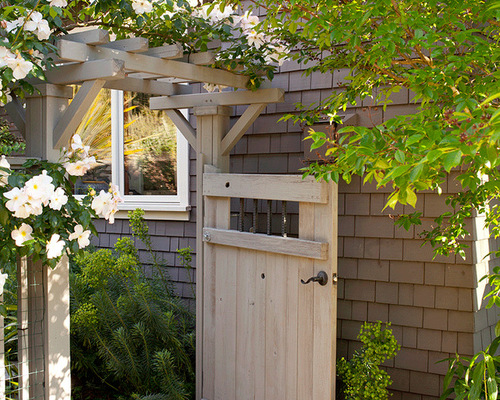
Garden 1: Pedersen Associates, original photo on Houzz
1. Set off your side yard. Turn an often neglected area of the garden into a delightful destination with the addition of an arbor-topped gate covered in blooms, marking the entrance to your side yard.
For arbors that are close to the house, coordinating with the architectural style of the building is key. This western red cedar arbor with Craftsman-style details would complement a bungalow, a cottage-style or, of course, a Craftsman-style home.
See More Craftsman Style Homes Here
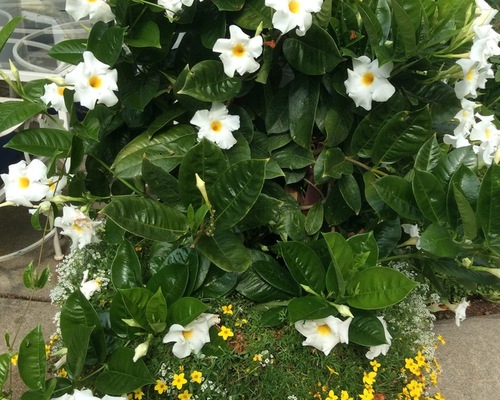
Garden 2: Claudia De Yong Garden Design, original photo on Houzz
2. Cover with vines. Arbors provide a vertical structure that can open up your growing potential for all types of vines. Grow fragrant varieties of climbing roses or wisteria to enjoy the fresh scent as you pass underneath. If you prefer flavor to fragrance, plant grapevines over a structure or train cherry tomatoes up the sides for easy picking.
In this English cottage-style garden, the designer planted a blush-pink climbing rose up one side of the arbor and a wine-red clematis to ramble up the other.
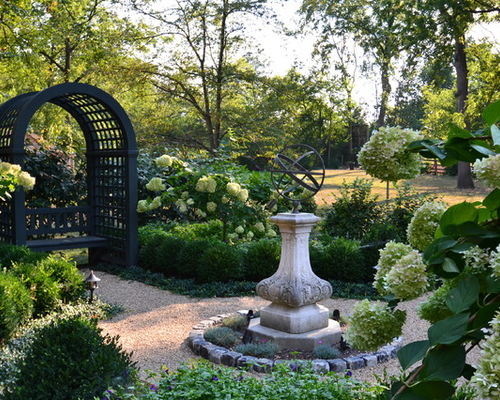
Garden 3: Stride Studios, original photo on Houzz
3. Create an inviting seating nook. An arbor can make a seating area all the more appealing. This understated cedar arbor and bench stained deep Charleston green offer an invitation to sit in the formal garden and admire the hydrangeas fading from green to pink in late summer.
Pick Up an Outdoor Rocking Chair to Relax In
An arbor that is more substantial can also be used as the supporting structure for a swinging bench. Climbing roses provide shade and a sense of seclusion during the day, and lights would make the covered arbor alluring in the evening.
4. Build a sweet entryway. Nothing says cottage charm like passing under a curved arbor planted with roses on your way to the front door. If you’re constructing an arbor to cover a gate, keep the size close to or larger than the average door size to make it comfortable to pass underneath. (An average exterior door is 3 feet wide and 6 to 8 feet tall.)
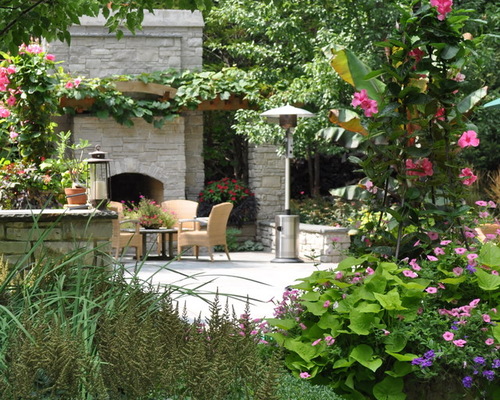
Garden 4: Lizzie Tulip Garden Design, original photo on Houzz
5. Make a formal statement. Stack multiple arbors along a garden path to highlight the axis of a formal garden layout. In this garden in York, England, four linked metal arbors planted with climbing roses form a corridor leading to a classic Italian-style fountain, which forms the center of the backyard.
Lounge on Outdoor Furniture in Your Beautiful Garden
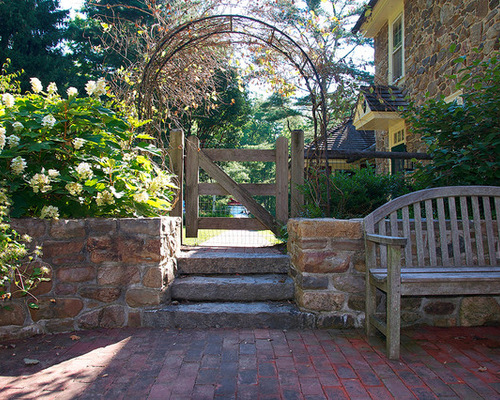
Garden 5: Spencer-Abbott Inc, original photo on Houzz
6. Anchor a gate. A simple metal archway or wooden arbor planted with vines can help anchor a garden gate to the landscape, making it look like a more intentional part of the design. Here, an arbor topped with a tangle of vines makes a rustic wooden gate feel like a natural part of the landscape.
7. Plant a shady corridor. In warm summer climates, walkways covered in shade can be some of a landscape’s most inviting places. Create a shady corridor by placing multiple arbors down a pathway and connecting the gaps between them with additional trellising to support vines.
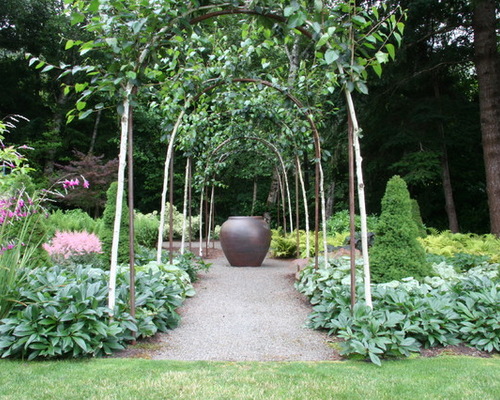
Garden 6: Mosaic Gardens, original photo on Houzz
8. Frame a focal point. Arbors grab our attention in the landscape and can be used to direct the eye to a garden destination, view or focal point. In this garden in Coos Bay, Oregon, the designer trained white-barked birch trees over steel arches to form an allée framing an empty urn.
Smaller gardens may not have the space for framing views with multiple arbors or allées. However, an arbor placed within a garden bed still has the effect of drawing attention to a focal point.
9. Mark a transition from one garden space to the next. Place an arbor to mark a change in the landscape, such as at the start of a pathway or where one garden room gives way to another. Bountifully planted arbors have the added benefit of concealing areas of the garden and creating a sense of intrigue about what lies behind them.

